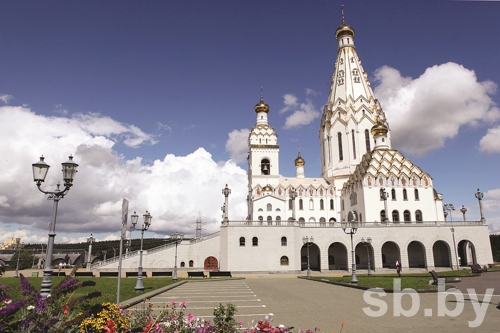
Memorial Church in Honour of All Saints in Minsk
“It is important that the Orthodox Church continues to promote interfaith harmony in Belarus, demonstrating an example of civilised relations. We have always existed peacefully through the balanced policy of the state and the Orthodox Church as regards Catholic and other believers. My position is clear: we have nothing to divide us in this world. As a powerful and large religion, you should respect and support others,” Mr. Lukashenko said.
These expectations fully coincide with the Belarusian Orthodox Church’s aspirations. Archbishop Pavel says that nobody can see the Orthodox Church as a competitor to the state or other faiths. It is a reliable and creative pillar of the country and society.
The Belarusian Orthodox Church will pay even greater attention to the social services and care for the needy. It also has its place in the education of the younger generation — including through training of young priests whose words would be appealing to the young generation. Another mission is to build — figuratively speaking — the hierarchy of effective interaction. The dialogue between the Church and the country’s leadership is bearing fruit. It should be promoted everywhere — through thoughtful and more active co-operation of parish heads and local authorities.
By Vladimir Velikhov











